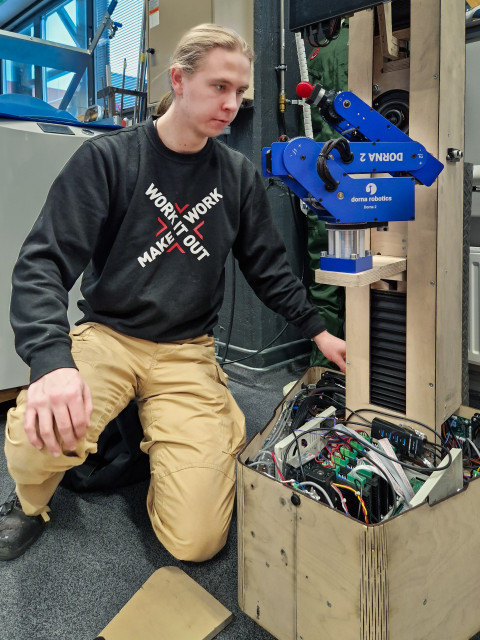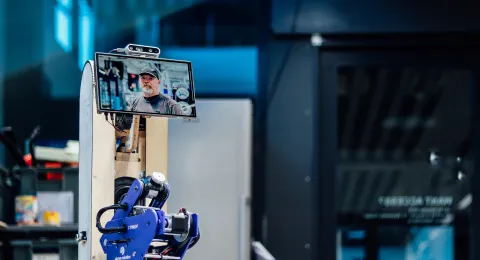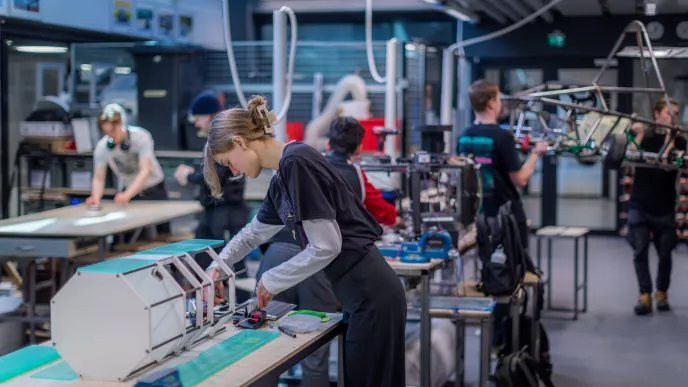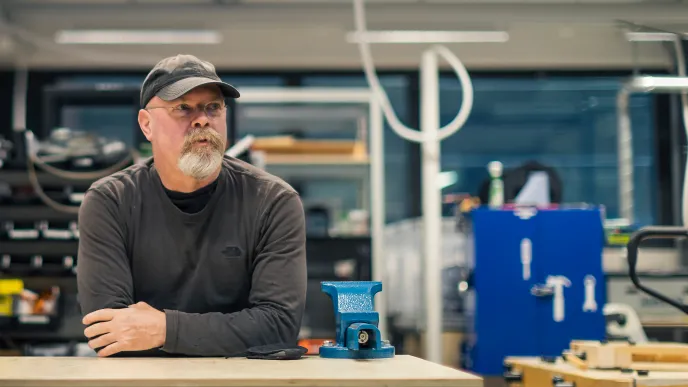It’s like being strapped into a chair, unable to move. You can talk and hear, but it’s as if you’re paralyzed and can only look forward. That’s how Jamie Hyneman describes virtual communication through a camera and laptop.
A mobile avatar robot, on the other hand, allows you to move freely around the room, inspect its contents and even move things.
”The physicality of the robot increases the sense of real-time interaction in virtual teaching. You can see and hear the same things through a computer or smart phone, but the robot can tilt its head towards a student, pivot when a student calls out, or point to objects on a table,” analyzes Hyneman, LUT’s professor of practice.
Hyneman says the best way to assemble a robot like this is to mount a camera on a mechanism that has the same ability and geometry as humans. In other words, it could turn its head to look in different directions and be raised and lowered to the same heights as a human.
All this cumulatively creates the sensation that the teacher is at the head of the classroom, teaching students in a way that we’re all used to.
“Students would, in all likelihood, very quickly forget that the instructor is actually somewhere else. In this way, the relationship between student and teacher could be expected to be almost identical to actual in-person instruction,” Hyneman points out.
Digitalization has changed education
JHC’s Hynebot avatar was built to enable Hyneman, who lives in the US, to be more present at LUT.
Professor Anssi Tarkiainen from LUT Business School says that digitalization has already reshaped pedagogy. He mentions the flipped classroom as an example: one-way communication can take place by sharing videos and other material, and learning that requires interaction and collaboration happens in a classroom that may be conventional or virtual.
”We could already say that a teacher in an online situation is like an avatar – a digital figure visible as a video image. A telepresence robot is a continuation of this type of development,” Tarkiainen explains.
It’s astonishing what avatars can do thanks to technology.
”Metaverse platforms provide novel opportunities for collaboration. On the other hand, robotics solutions, such as Hynebot, do the same. It’s up to teachers how creatively they use the tools at their disposal for teaching.”


Did you know?
New code for Hynebot
"My short-term wish is for students to get more out of their teachers and out of experts who cannot visit our campus. Hynebot’s future versions could even move around in a factory and give tours, as one of JHC’s sponsors proposed,” says Robert Hämäläinen, a research assistant developing Hynebot at JHC.
A telepresence robot differs from devices such as automated robot vacuums in that it’s continuously human-controlled. The robot enables the human at its reins to take part in discussions, see the surrounding space and do things if robot arms are attached.
To use professional lingo, Robert Hämäläinen is mainly developing Hynebot’s back-end. In plain language, Hämäläinen is developing systems that come between the user interface and the electronics.
”In other words, I’ll probably develop code for some of Hynebot’s electronics, and I’ll most likely put the finishing touches on Hynebot’s website. My colleague Jake Cumens is in charge of integrating Hynebot’s arm with the back-end system,” Hämäläinen says.
Hämäläinen and Cumens are the third consecutive team to work on Hynebot. Perttu Juvonen designed the robot’s structure and electronics as a part of his final thesis, and Aditya Hosamani and Swapnil Baad prepared Hynebot’s website.
Where can Hynebot operate?
Hämäläinen is a computer science and electrical engineering student. He says he has a long history of “tinkering with different things”.
”Many of my interests involve putting things together. When I was little, I loved Legos and Meccanos. Electronics didn’t enter the picture until junior high or high school. I started putting simple building sets together and programming Arduinos out of the sheer fun of it. Most of my projects never got past the prototype phase, but some of them I still use.”
What fascinates Hämäläinen most about the Hynebot project is the professional challenge it poses. Hämäläinen’s job description involves back-end and embedded systems, which he hopes to be working with also in the future.
As for factory tours given by Hynebot – they’re a far-off scenario. According to Hämäläinen, they would require making Hynebot more user-friendly or easier to operate.
So far, Hynebot can move on a moderately uneven surface. Hämäläinen says it needs to realistically move indoors on a variety of surfaces and also ascend low-profile ramps.






